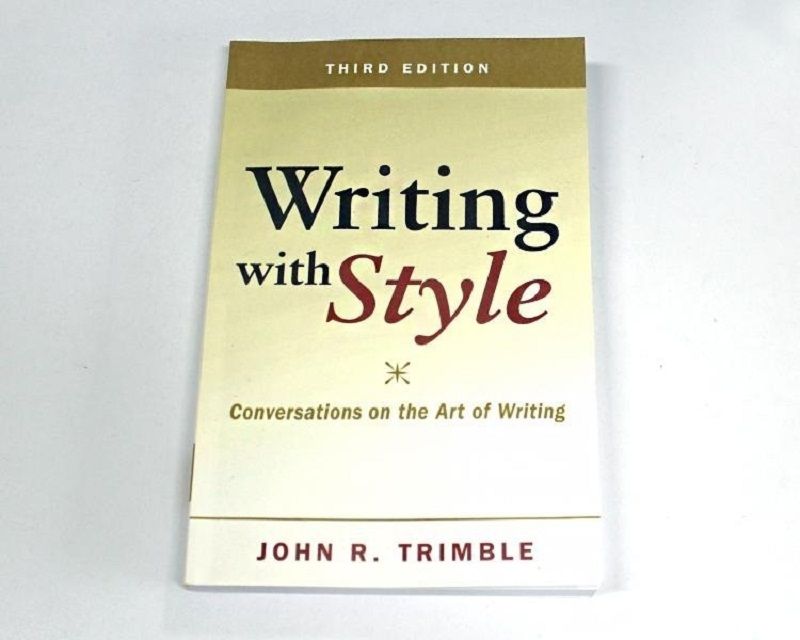

Tiểu luận Tác động của đại dịch Covid-19 đến nền kinh tế thế giới.Bài tập Nguyên lý kế toán Revised.Strunk and White’s The Elements of Style receives frequent mention in articles about writing. Originating as a classroom study aid prepared by Cornell English Professor William Strunk in 1918, this widely-used desk reference of English usage, form, and style continues to influence writers after a hundred years.Īfter Strunk died in 1946, essayist E.B. White was asked to augment and edit the guide for a wider audience. When White died in 1985, Elements was in its Third Edition. The current Fourth Edition has been, according to White’s stepson Roger Angell, “modestly updated” to include references to word processors and to acknowledge feminist concerns about pronoun usage.Įlements has grown from Strunk’s original 43 pages to 105, but is still a compact, no-frills handbook for the writer in a hurry for answers to common questions. The first four sections are easily skimmed, and the index will lead you quickly to the point of grammar you want. There is no satisfactory explanation of style, no infallible guide to good writing, no assurance that a person who thinks clearly will be able to write clearly, no key that unlocks the door, no inflexible rule by which writers may shape their course,Īccording to White, style is a mystery, an entity that arises from the sum of an individual’s writing: The fifth section, “An Approach to Style,” provides a useful reminder that there is more to producing distinctive prose than just getting the grammar right: A 60-word glossary defines such basic terms as “gerund” and “linking verb.” When we speak of Fitzgerald’s style, we don’t mean his command of the relative pronoun, we mean the sound his words make on paper. The Elements of Style deserves its long popularity as a concise guide to correct usage. List of Greek Words in the English Languageĥ Responses to “Strunk and White’s The Elements of Style”.10 Rules for Writing Numbers and Numerals.Want to improve your English in five minutes a day? Get a subscription and start receiving our writing tips and exercises daily! Keep learning! Browse the Book Reviews category, check our popular posts, or choose a related post below: It can equip a writer with the “elements,” but “style” must arise from the personality and mental furnishings of the writer.Ī searchable version of Elements (Third Edition) can be found at. This is a must-have for anyone’s library. I’ve read it a few times.Īn excellent book although I’ve read plenty of reviews that aren’t so positive about it. My favorite edition is the illustrated one. Hard covered, filled with unusual illustrations related to the examples. The Elements of Style has no doubt exercised plenty of negative influence on literalists who have tried to model all of their writing on its precepts. Guides like Elements are tools, not templates. Writers who follow any guide slavishly are like the boy in the tale who carries butter home under his hat on a hot day because that’s how his mother told him to carry something else.Ĭheck out “Spunk & Bite: A writer’s guide to punchier, more engaging language & style” by Arthur Plotnik. It is a fun read, and very helpful to writers who are trying to spice up their prose.

It also confronts the sometimes dreary guidance in “Elements of Style.Several different editions of the Dungeons & Dragons ( D&D) fantasy role-playing game have been produced since 1974. The current publisher of D&D, Wizards of the Coast, produces new materials only for the most current edition of the game. However, many D&D fans continue to play older versions of the game and some third-party companies continue to publish materials compatible with these older editions.Īfter the original edition of D&D was introduced in 1974, the game was split into two branches in 1977: the rules-light system of Dungeons & Dragons and the more complex, rules-heavy system of Advanced Dungeons & Dragons ( AD&D).
Easy writer 3rd edition series#
The standard game was eventually expanded into a series of five box sets by the mid-1980s before being compiled and slightly revised in 1991 as the Dungeons & Dragons Rules Cyclopedia. Meanwhile, the 2nd edition of AD&D was published in 1989. In 2000 the two branch split was ended when a new version was designated the 3rd edition, but dropped the "Advanced" prefix to be called simply Dungeons & Dragons. 2.3 Dungeons & Dragons Basic Set and revisions.2.4 Advanced Dungeons & Dragons 2nd Edition.


 0 kommentar(er)
0 kommentar(er)
